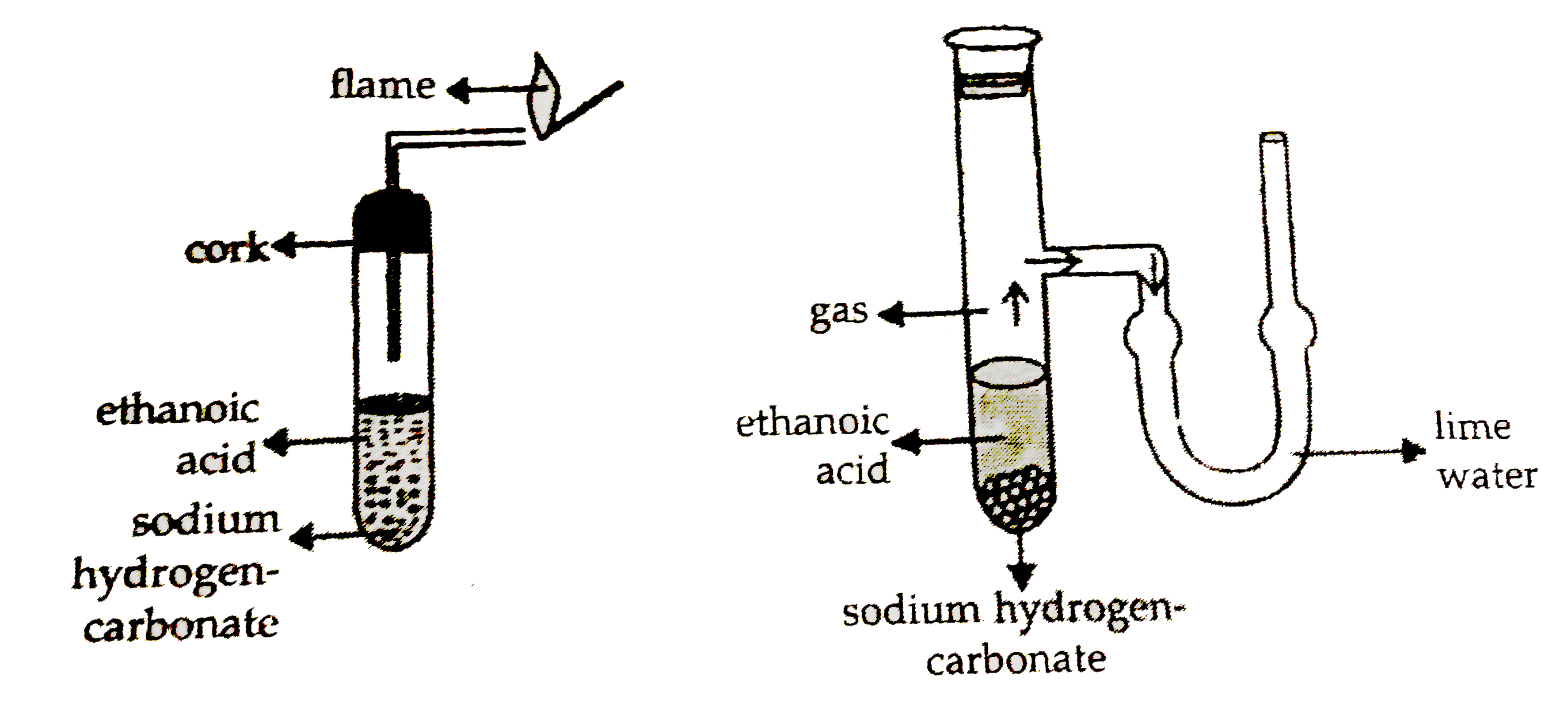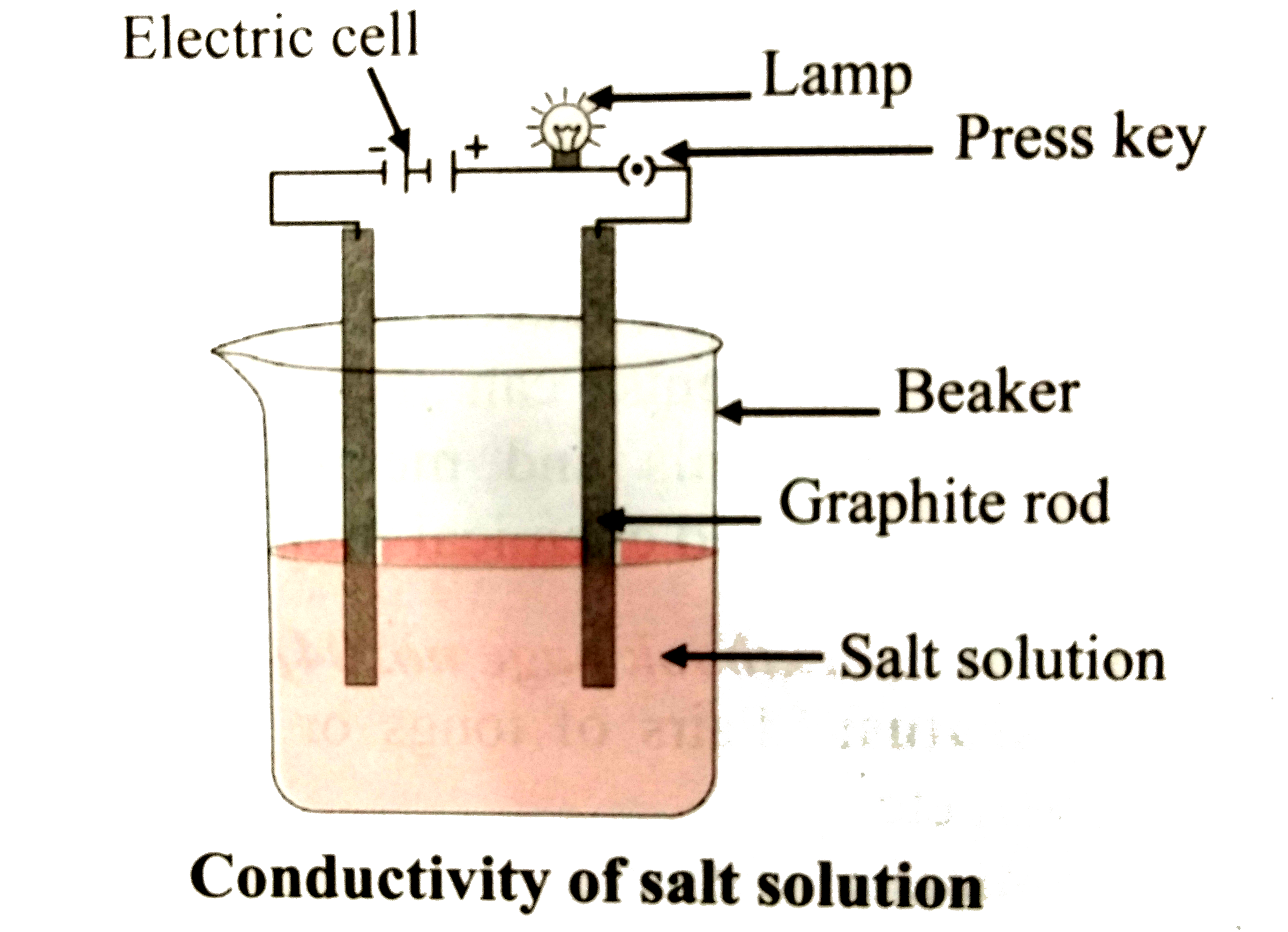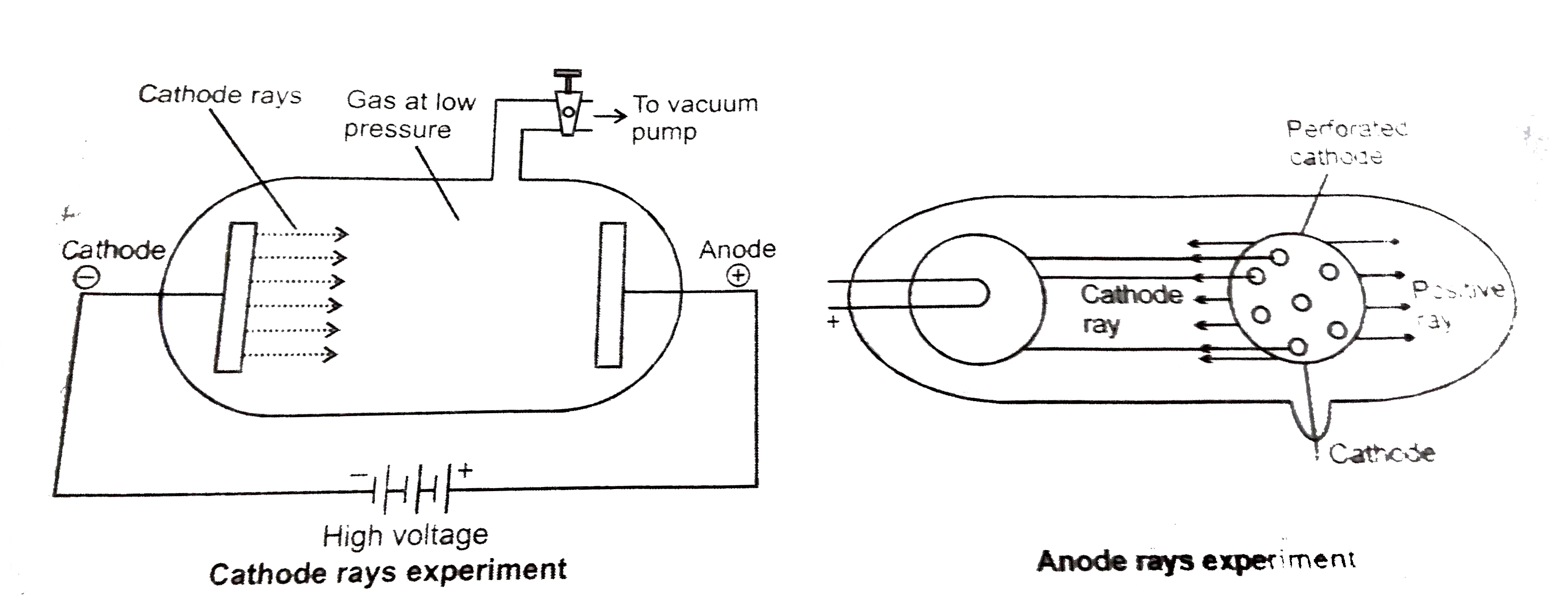A little amount of sulphuric acid is added in the process of electrolytic decomposition of water. Two gases, the one liberated at negative electrode puts off the burning splinter and burns with blue flame and another gas at positive electrode, glows the burning splinter and is a non-combustible gas. The gases liberated at negative and positive electrodes, respectively, are _____ _
hydrogen and sulphur dioxide
hydrogen and oxygen
oxygen and hydrogen
carbon dioxide and oxygen
The correct Answer is:B
The gas that is liberated at negative electrode and puts off burning splinter and burns with a blue flame is hydrogen and the gas that is liberated at positive electrode and glows the burning splinter brightly and is non-combustible is oxygen.
Hence, the correct option is (b).
Topper's Solved these Questions
- CHEMISTRY IN DAILY LIFEBOOK - PEARSON IIT JEE FOUNDATIONCHAPTER - CHEMISTRY IN DAILY LIFEEXERCISE - ASSESSMENT TEST (TEST 2)
15 Videos
- ATOMIC STRUCTURE AND TRANSFORMATION OF MATTERBOOK - PEARSON IIT JEE FOUNDATIONCHAPTER - ATOMIC STRUCTURE AND TRANSFORMATION OF MATTEREXERCISE - Assessment Test 2
15 Videos
- CLASSIFICATION OF MATTERBOOK - PEARSON IIT JEE FOUNDATIONCHAPTER - CLASSIFICATION OF MATTEREXERCISE - ASSESSMENT TEST (TEST-2)
9 Videos
Similar Questions
Fill in the blanks to make true statements.
When electric current is passed through water containing a small amount of dilute sulphuric acid, then
Hydrogen gas is liberated at the — (nega tive/positive) electrode called
View SolutionFill in the blanks to make true statements.
When electric current is passed through water containing a small amount of dilute sulphuric acid, then
Oxygen gas is liberated at the — (nega tive/positive) electrode called the --
View Solution
Knowledge Check
Four students added a small amount of ethanoic acid to sodium hydrogencarbonate. The gas evolved was tested for its behaviour with burning splinter and lime water. They reported their observations as given on the next page.


The correct observations have been reported by student:AABBCCDDEhanoic acid was added to sodium hydrogencarbonate solution and the gas evolved was tested with a burning splinter. The following fourobservations were reporte:
The gas burns with the opsound and the flame gets extinguished
The gas does not burn but the splinter burns with a pop sound
The flame extinguishes and the gas does not burn.
The gas burns with a blue flame and the splinter burns brightly.
The correct observation is reported in,AaBbCcDdElectrolysis is the process in which electrical energy is converted to chemical energy. In electrolytic cell, oxidation takes place at anode and reduction at cathode. Electrode process depends on the electrode taken for electrolysis. Amount of substance liberated at an electrode is directly propertional to the amount of charge passed through it. The mass of substance liberated at electrode is calculated using the following relation :
m=ItE96500
Here, E represents the equivalent mass and 96500 C is called the Faraday constant. Faraday (96500 C) is the charge of 1 mole electron, i.e., 6.023×1023 electrons, it is used to liberate one gram equivalent of the substance.
The platinum electrodes were immersed in a solution of cupric sulphate (CuSO4) and electric current is passed through the solution. after sometime, it was observed that the colour of copper sulphate disappeared with evolution of a gas at the electrode. The colourless solution contains :Aplatinum sulphateBcopper nitrateCcopper sulphateDsulphuric acid
Raghvan is a student of class 9 in a Chennai school. His teacher, Mr. Murthy, had just finished a lecture on various types of changes which take place even in the same substance under different experimental conditions. Mr. Murthy gave a beaker full of a common liquid to Raghav. A drop of this liquid can turn anhydrous copper sulphate blue. Mr, Murthy than asked Raghav to perform two different experiements starting with the given liquid which lead to the formation of gas/gases under different experimental conditions. He also asked Raghavan to classify these changes under different types of changes. Raghvan first arranged a distillation apparatus. He took some of the given liquid in the distillation flask and started heating it with a burner. After some time, a gas started forming and going into the condenser. The condenser cooled the gas and re-converted it into the original liquid. Raghvan then arranged an apparatus to pass electric current into the given liquid. He took the given liquid in the appropriate apparatus, acidified it by adding a little of sulphuric acid, and then passed electric current from a battery for a considerable time. He collected two gases in the two water-filled test-tubes inverted over the two electrodes of the apparatus. When the mixed these two gases and ignited this mixture very,very carefully (with the help of his teacher), he heard a little explosion and saw the drops of original liquid being formed. Raghvan both the experiments and the conclusions obtained to his teacher. Mr. Murthy was very happly
(a) What do you think was the liquid give to Raghvan by Mr. Murthy ?
(b) Which gas is formed when heat energy is applied to the liquid in the distillation flask ? What type of change occurs in this case ?
(c) Which two gases are formed when electric energy is applied to the acidified liquid in the appropriate appartus ? What type of change occurs in this case ?
(d) How does the above change (which occurs on passing electric current through acidified liquid) differ from the change which takes place when a piece of paper is burnt ?
(e) What values are displayed by Raghvan in this episode ?
View SolutionApparatus: Metal spatula, burner, carbon electrodes, beaker, cell, lamp, press key, electrical wires, etc.
Chemicals: Samples of sodium chloride, potassium iodide and barium chloride, water.
Procedure: Observe the above samples. Place sample of one of the above salts on the spatula and heat it on the flame of the burner. Repeat the procedure using the other salts. As shown in the figure, assemble an electrolytic cell.

Assemble an electrolytic cell by using a beaker and connecting the carbon electrodes to the positive and negative terminal of the cell. Dip the electrodes in solution of any one of the salts. Do you see the lamp glowing? Check this with all the other salts as well.
View SolutionThe existence of negatively charged particle in an atom was shown by J.J. Thomson as a result of the studies of the passage of electricity through gases at extremely low pressure known as discharge tube experiments. When a high voltage of the order of 10,000 volts or more was impressed across the electrodes, some sort of invisible rays moved from the negative electrode to the positive electrode these rays are called as cathode rays.

Cathode rays travel in straight path in absence of electrical and magnetic field . Cathode rays consist of material part and charged particles? Cathode rays produce X-rays and light is emitted when they strike on ZnS screen. Cathode rays penetrate through thin sheets of aluminium and other metals . They affect the photogenic plate and passes heating effect when they strike on metal foil. The raito of charge to mass i.e charge/mass is same for all the cathode rays irrespective of the gas used in the tube.
The existence of positively charged particle in an atom was shown be E. Goldstein. He repeated the same discharge tube experiments by using a perforated cathode. It was observed that when a high potential difference was applied between the electrodes, not only cathode rays were produced but also a new type of rays were produced simultaneoulsy from anode moving towards cathode and passes through the holes or canal of the cathode. These termed as canal rays or anode rays.
These rays travel in straight lines and consists of positively charged particles. These rays have kinetic energy and produces heating effect also. The e/m ratio of these rays is smaller than that of electrons. Unlike cathode rays, their e/m value is dependent upon the nature of the gas taken in the tube. These rays produced flashes of light on ZnS screen and can pass throughs thin metal foils. They can produce physical and chemical changes and are capable to produce ionisation in gases.
Which is not true with respect to cathode rays?
View SolutionElectrolysis is the process in which electrical energy is converted to chemical energy. In electrolytic cell, oxidation takes place at anode and reduction at cathode. Electrode process depends on the electrode taken for electrolysis. Amount of substance liberated at an electrode is directly propertional to the amount of charge passed through it. The mass of substance liberated at electrode is calculated using the following relation :
m=ItE96500
Here, E represents the equivalent mass and 96500 C is called the Faraday constant. Faraday (96500 C) is the charge of 1 mole electron, i.e., 6.023×1023 electrons, it is used to liberate one gram equivalent of the substance.
On electrolysis of dilute sulphuric acid using platinum electrodes, the product obtained at the anode will be :
View SolutionElectrolysis is the process in which electrical energy is converted to chemical energy. In electrolytic cell, oxidation takes place at anode and reduction at cathode. Electrode process depends on the electrode taken for electrolysis. Amount of substance liberated at an electrode is directly propertional to the amount of charge passed through it. The mass of substance liberated at electrode is calculated using the following relation :
m=ItE96500
Here, E represents the equivalent mass and 96500 C is called the Faraday constant. Faraday (96500 C) is the charge of 1 mole electron, i.e., 6.023×1023 electrons, it is used to liberate one gram equivalent of the substance.
Calculate the volume of gas liberated at the anode at STP during the electrolysis of a CuSO4 solution by a current of 1 A passed for 16 minutes and 5 seconds :
View Solution